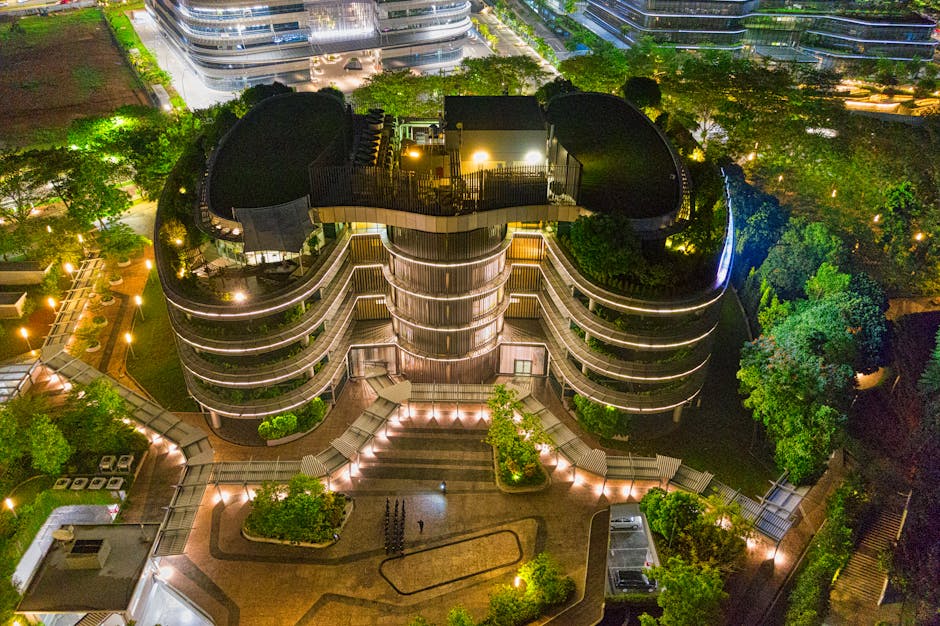Introduction
Heating, Ventilation, and Air Conditioning (HVAC) systems play a critical role in building performance, particularly when it comes to energy efficiency and occupant comfort. In sustainable design, optimizing HVAC systems is essential to minimize energy consumption, reduce greenhouse gas emissions, and enhance indoor environmental quality. In this article, we will explore the key strategies for optimizing HVAC systems to align with sustainability goals, making buildings not only energy-efficient but also healthier and more comfortable.
The Role of HVAC in Sustainable Building Design
HVAC systems account for a significant portion of energy consumption in both residential and commercial buildings. In sustainable design, an efficient HVAC system can dramatically reduce energy usage and operating costs. Moreover, it contributes to a building’s overall environmental performance by improving indoor air quality, maintaining thermal comfort, and minimizing the environmental impact of heating and cooling.
Key Strategies to Optimize HVAC Systems for Building Performance
To align HVAC systems with sustainable design principles, several optimization strategies can be applied:
• Energy-Efficient Equipment Selection: One of the first steps in optimizing HVAC systems is selecting energy-efficient equipment. Look for systems with high-efficiency ratings such as ENERGY STAR or those that meet Australian energy performance standards. Variable refrigerant flow (VRF) systems, for example, offer precise control over heating and cooling, reducing energy use.
• Right-Sizing of HVAC Systems: Over-sizing or under-sizing HVAC systems can lead to inefficiencies. Conducting accurate load calculations ensures that the HVAC system is properly sized to meet the specific heating and cooling needs of the building. This reduces energy waste and avoids overworking the system, which can lead to increased maintenance costs and reduced lifespan.
• Zoning and Controls: Zoning HVAC systems allows different areas of the building to be heated or cooled independently, based on their specific needs. Implementing advanced controls such as smart thermostats and Building Management Systems (BMS) can help optimize energy use by adjusting temperature settings based on occupancy, time of day, and weather conditions.
• Heat Recovery Systems: Heat recovery systems can capture waste heat from exhaust air and use it to precondition incoming fresh air. This reduces the amount of energy required to heat or cool the fresh air, improving the overall energy efficiency of the HVAC system.
• Passive Design Integration: Sustainable HVAC design should work hand-in-hand with the building’s passive design features. Incorporating elements like natural ventilation, solar shading, and thermal mass can reduce the demand on mechanical systems. In buildings with well-designed passive systems, HVAC systems can be downsized or even turned off during certain times of the year.
Maximizing Indoor Air Quality with HVAC Systems
While energy efficiency is a priority, indoor air quality (IAQ) is equally important in sustainable HVAC design. Poor air quality can negatively impact occupant health and productivity, so HVAC systems must be optimized to maintain a healthy indoor environment.
• Efficient Ventilation: Adequate ventilation is key to maintaining good indoor air quality. Energy-efficient HVAC systems incorporate demand-controlled ventilation (DCV), which adjusts the amount of fresh air based on occupancy levels, reducing energy waste while maintaining proper ventilation.
• Air Filtration: Advanced air filtration systems, such as high-efficiency particulate air (HEPA) filters, can remove contaminants and improve IAQ. Ensuring proper filtration not only contributes to occupant health but also improves system performance by keeping components clean.
• Humidity Control: Maintaining the right indoor humidity levels is essential for occupant comfort and health. High-efficiency dehumidifiers or humidifiers can be incorporated into HVAC systems to ensure the air remains within the optimal range for comfort and air quality.
Integrating Renewable Energy with HVAC Systems
One of the most effective ways to enhance HVAC system sustainability is by integrating renewable energy sources into the system design. This reduces the building’s reliance on fossil fuels and lowers its carbon footprint.
• Solar-Powered HVAC Systems: Solar panels can be used to power HVAC systems or preheat air before it enters the system, reducing the overall energy demand. Solar-assisted air conditioning units are also becoming more popular in sustainable building designs.
• Geothermal Heat Pumps: Geothermal heat pump systems use the earth’s stable underground temperature to provide heating and cooling. These systems are incredibly energy-efficient and can significantly reduce the building’s energy consumption compared to traditional HVAC systems.
Lifecycle Cost and Maintenance Considerations
A sustainable HVAC system is not only energy-efficient but also cost-effective over its entire lifecycle. Ensuring that the system is properly maintained and designed for durability is essential for long-term performance.
• Lifecycle Cost Analysis: When selecting HVAC systems, consider not only the upfront installation costs but also the long-term operational and maintenance costs. High-efficiency systems may have a higher initial cost but will save significantly on energy bills over time.
• Regular Maintenance: Routine maintenance ensures that HVAC systems operate at peak efficiency and helps prevent energy losses due to system malfunctions. Regular filter changes, cleaning of components, and inspections should be part of the building’s sustainability plan.
Conclusions
Optimizing HVAC systems for sustainable design is a critical step in improving building performance and reducing energy consumption. By implementing strategies such as selecting energy-efficient equipment, integrating renewable energy sources, and maximizing indoor air quality, building owners can significantly lower operational costs and create healthier, more sustainable spaces for occupants. As the demand for energy-efficient buildings grows, optimizing HVAC systems will remain a cornerstone of sustainable design and building performance.


